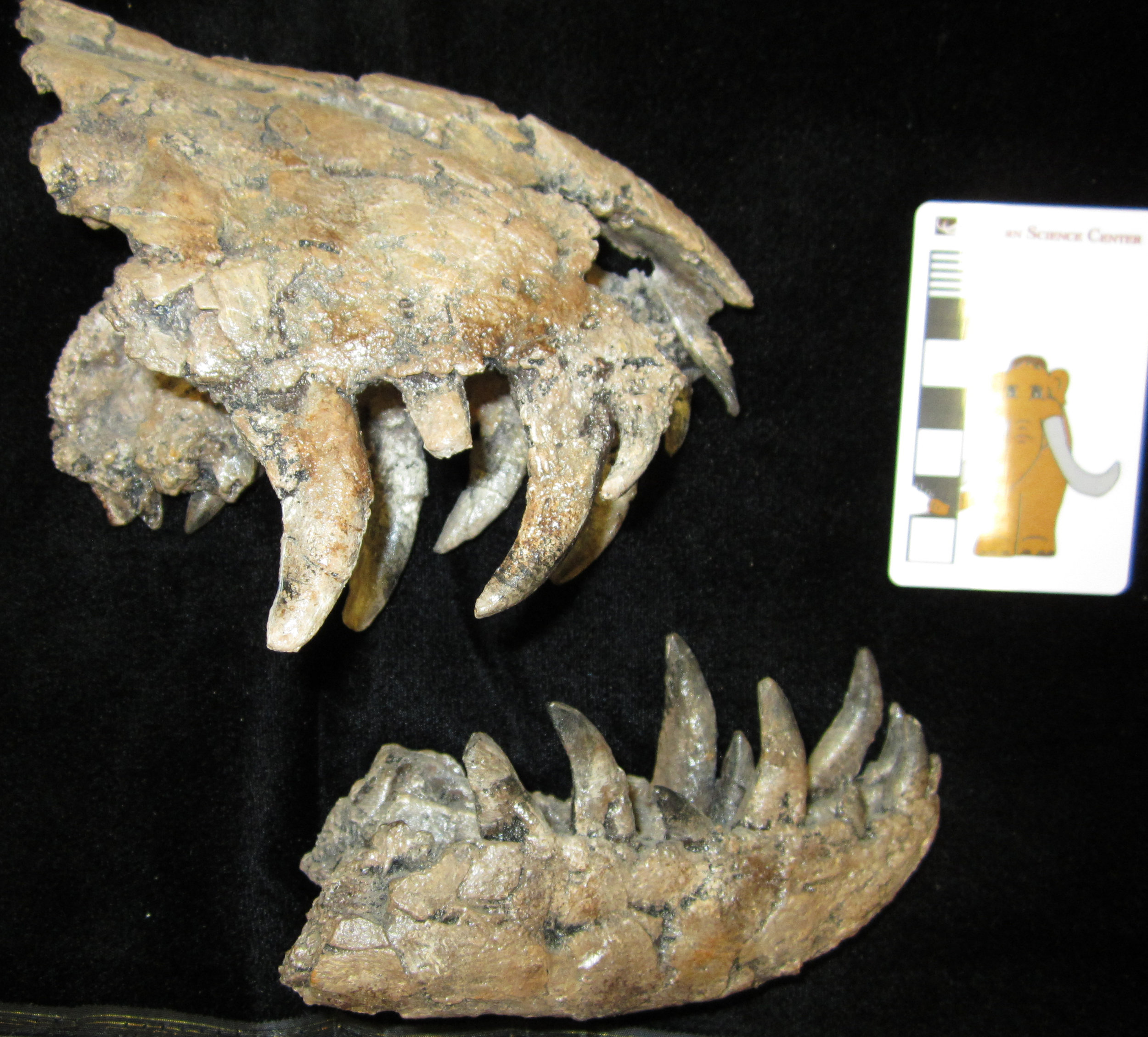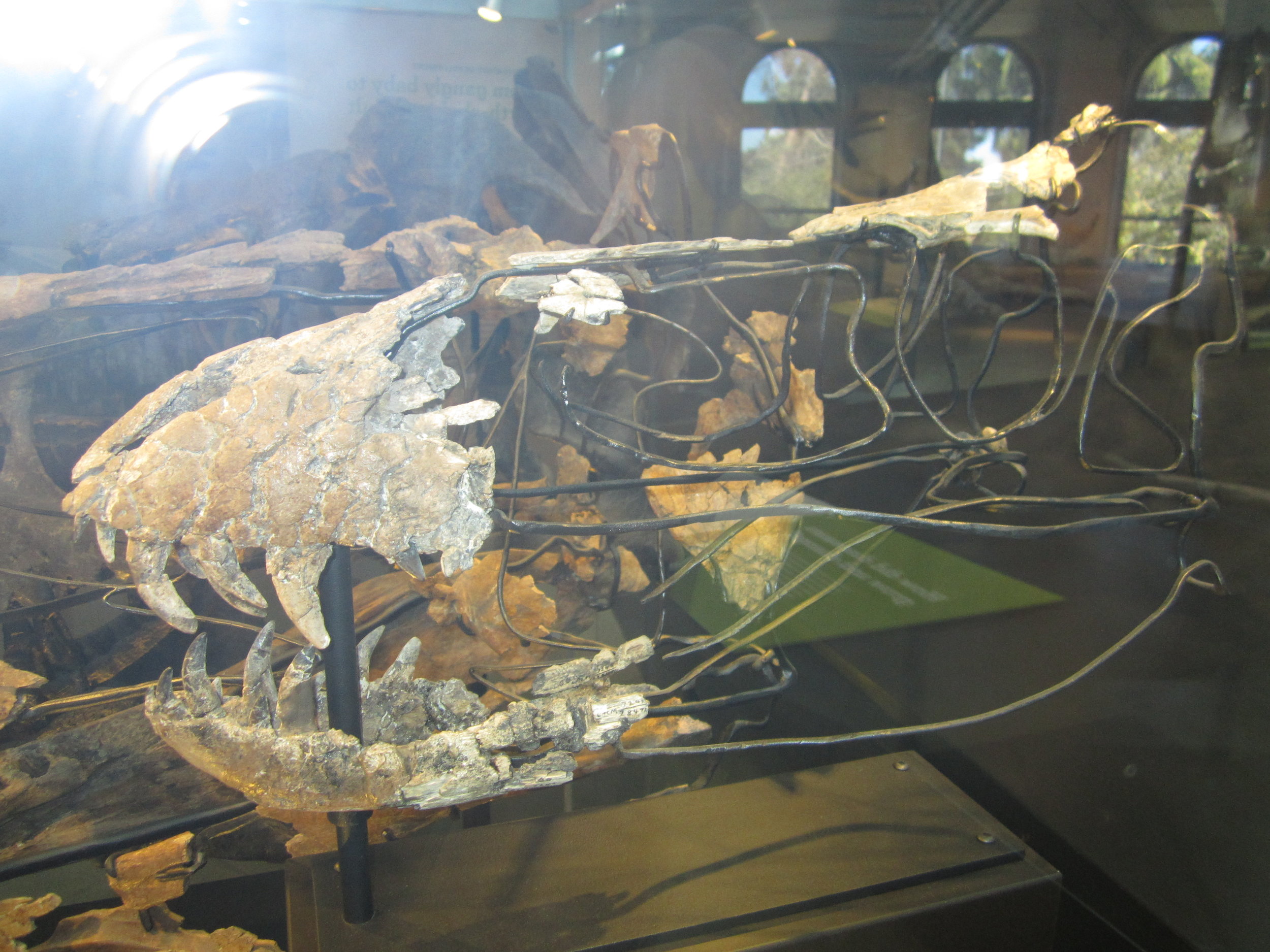 Tyrannosaurus rex. If any prehistoric animal has achieved mythic status among us humans, it must be this gigantic carnivorous dinosaur. But far from being a mere monster, T. rex was a living creature as complex, wondrous, and deserving of study as any alive today. As with many dinosaurs, the last two decades have seen a burst of new discoveries about T. rex, from the acuity of its senses to how it is related to other species in the tyrannosaur group. One of most fascinating areas of study is how T. rex grew.These formidable upper and lower jaws belong to an important part of that particular story. This is a cast of a specimen in the collection of the Natural History Museum of Los Angeles County, LACM 28471. This cast belonged to the late fossil hunter Harley Garbani, who also found the actual fossil; the cast was donated to the Western Science Center by his wife, Mary. LACM 28471 was originally named as a new species of small tyrannosaur, called "Stygivenator molnari". However, in 2004, paleontologists Thomas Carr and Thomas Williamson showed that LACM 28471 is actually a juvenile specimen of T. rex.Juvenile specimens such as LACM 28471 reveal that young T. rex had much longer legs, lighter skulls, and longer snouts for their body size compared to adults. LACM has put the actual skull of LACM 28471 on display and mounted a cast skeleton (see photos), which you can see is much smaller than the adult looming overhead! A new discovery of a juvenile T. rex was just announced by paleontologists at the University of Kansas: http://news.ku.edu/2018/03/21/researchers-investigate-baby-tyrannosaur-fossil-unearthed-montana. There is still much for us to learn about the early life of the tyrant lizard king.
Tyrannosaurus rex. If any prehistoric animal has achieved mythic status among us humans, it must be this gigantic carnivorous dinosaur. But far from being a mere monster, T. rex was a living creature as complex, wondrous, and deserving of study as any alive today. As with many dinosaurs, the last two decades have seen a burst of new discoveries about T. rex, from the acuity of its senses to how it is related to other species in the tyrannosaur group. One of most fascinating areas of study is how T. rex grew.These formidable upper and lower jaws belong to an important part of that particular story. This is a cast of a specimen in the collection of the Natural History Museum of Los Angeles County, LACM 28471. This cast belonged to the late fossil hunter Harley Garbani, who also found the actual fossil; the cast was donated to the Western Science Center by his wife, Mary. LACM 28471 was originally named as a new species of small tyrannosaur, called "Stygivenator molnari". However, in 2004, paleontologists Thomas Carr and Thomas Williamson showed that LACM 28471 is actually a juvenile specimen of T. rex.Juvenile specimens such as LACM 28471 reveal that young T. rex had much longer legs, lighter skulls, and longer snouts for their body size compared to adults. LACM has put the actual skull of LACM 28471 on display and mounted a cast skeleton (see photos), which you can see is much smaller than the adult looming overhead! A new discovery of a juvenile T. rex was just announced by paleontologists at the University of Kansas: http://news.ku.edu/2018/03/21/researchers-investigate-baby-tyrannosaur-fossil-unearthed-montana. There is still much for us to learn about the early life of the tyrant lizard king.
 By Andrew McDonald
By Andrew McDonald
